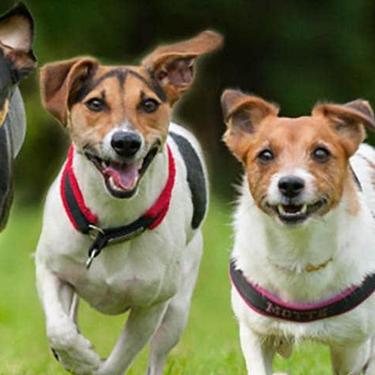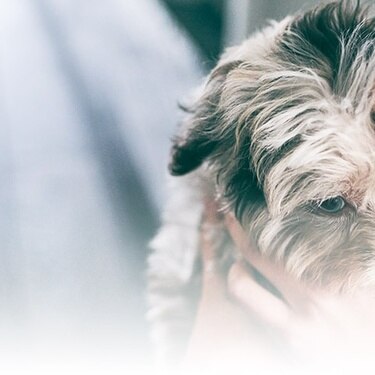
-
Find the right food for your petTake this quiz to see which food may be the best for your furry friend.Find the right food for your petTake this quiz to see which food may be the best for your furry friend.Featured products
 Adult Wet Dog Food with Beef
Adult Wet Dog Food with BeefHill's Science Plan Adult Multipack Wet Dog Food with Chicken, Beef & Turkey are complete premium pet foods for adult dogs from 1 year. Your dog will love these deliciously smooth and savoury minced loaves, formulated for balanced nutrition and overall health.
Shop Now Puppy Food
Puppy FoodHill's Science Plan Puppy Multipack Wet Dog Food with Chicken & Beef are complete premium pet foods for growing puppies from weaning until 1 year old and for pregnant and nursing dogs. Your puppy will love these deliciously smooth and savoury minced loaves, formulated for balanced nutrition and overall health.
Shop Now Mature Adult Dog Food
Mature Adult Dog FoodHill's Science Plan Mature Adult Multipack Wet Dog Food with Chicken & Beef are complete premium pet foods for mature adult dogs from 7 years. Your dog will love these deliciously smooth and savoury minced loaves, formulated to deliver the appropriate amount of energy to support the needs of adult dogs.
Shop NowFeatured products Light Adult Multipack Wet Cat Food with Chicken & Ocean Fish
Light Adult Multipack Wet Cat Food with Chicken & Ocean FishTender chicken chunks in gravy for cats, with L-carnitine and fewer calories for ideal weight management. Packed with high-quality protein, omega-6s, and vitamin E for shiny fur and healthy skin.
Shop Now Adult Multipack Wet Cat Food with Beef, Ocean Fish & Chicken
Adult Multipack Wet Cat Food with Beef, Ocean Fish & ChickenTender chunks in gravy for cats, with high-quality protein to maintain lean muscle. With vitamin E and omega-3s & -6s for healthy skin and balanced minerals to support healthy vital organs.
Shop Now Mature Adult Wet Cat Food with Chicken
Mature Adult Wet Cat Food with Chicken
Tender chicken chunks in gravy for mature adult cats. Made with easy-to-digest ingredients, high-quality protein for lean muscle maintenance and antioxidant vitamins C+E for optimal health.
Shop Now -
Dog
- Dog Tips & Articles
-
Health Category
- Weight
- Food & Environmental Sensitivities
- Urinary
- Digestive
- Joint
- Kidney
-
Life Stage
- Puppy Nutrition
- Adult Nutrition
- Senior Nutrition
Cat- Cat Tips & Articles
-
Health Category
- Weight
- Skin & Food Sensitivities
- Urinary
- Digestive
- Kidney
-
Life Stage
- Kitten Nutrition
- Adult Nutrition
Featured articles Show some love with wet foods: a great choice for pets with health issues
Show some love with wet foods: a great choice for pets with health issuesShow some love with wet foods: a great choice for pets with health issues.
Read More The Right Diet For Your Pet
The Right Diet For Your PetIn people, the right diet is very important. If you are eating the wrong way for your metabolism, activity level, age and lifestyle you could end up with health issues.
Read More The Incredible Science Behind Your Pet's Microbiome
The Incredible Science Behind Your Pet's MicrobiomeLearn what your pet's microbiome is, how it contributes to your pet's gut and overall health, and why nutrition is important in maintaining healthy microbiomes.
Read More -


Bringing home a new dog is a big adjustment. Hopefully, your wriggly new addition is content as can be, surrounded by the non-stop love and attention of their new family.
But, as Monday morning approaches, anxiety creeps in. Jobs and school could force you to leave your new dog at home for a few hours (unless you're among the fortunate few that get to bring your dog to work with you). So, how can you make sure your dog stays safe and happy while you're away?
Crate Train Your Dog
A crate, if used correctly, is an excellent tool for housetraining a dog, but it can also be your dog’s go-to spot when they’re home alone — a haven and a place for a nice nap. While a crate might be a good option for part of a 9-to-5 workday, you want to be careful not to overdo it. Consider that if your dog has been in the crate all night, you shouldn’t be leaving them cooped up all day too. Crates can be a valuable tool, but if you find that your dog avoids spending time in their crate when the door is open, or no longer enters the crate willingly, you must reconsider how and why you are using it.
Get a ‘Doggy Cam’
Indoor cameras that you can monitor via your phone, are excellent tools to check up on your dog if you are worried about them being home alone. There are many options available on the market that allow you to both see and hear your dog and can alert you to activity or noise so that you can do a quick check in.
Designate a Dog-Proof Room
If you have to leave your dog home all day, think about dog-proofing a small room in your home that can be closed off from the rest of the house. Blue Cross lists several points that pet parents should address when dog-proofing a room:
- Unplug electrical items and hide wires and cables.
- Remove hazardous chemicals, like cleaning products and medications.
- Keep food out of reach.
- Keep chairs and other furniture away from tables or worktops to prevent climbing.
Basically, get rid of absolutely everything your dog could get into while you're gone, and remove any objects that could be chewed or swallowed, such as shoes or coins.
A good room to choose might be one with an easy-to-clean floor, such as tile. Set up designated spaces for sleeping and play. Leave water and toys so they don’t get bored, and put out newspapers or puppy pads on the floor in case of accidents. If your new dog is a puppy, accidents are bound to happen.
Getting Your New Dog Used to Being Alone
Leave them alone in the room for a few minutes at a time until they get used to the idea, then slowly increase the amount of time they’re alone. As your dog starts to adapt to this room, and you feel comfortable with their behaviour, you can start to expand their access to more of the home when you're away. Good tests for this are when you're only going to be away for 30 to 60 minutes or so, like a trip to the supermarket. If they can behave in a larger area for a short time, you can also gradually lengthen the time they’re allowed to roam in the house while you're away until you reach a full workday.


Tasty Tips
Provide Sufficient Enrichment
Ensure that you provide plenty of things to keep your new pooch happy and occupied. - appropriate food dispensing toys and chew toys can keep your dog occupied for some of the time that they are awake while you are away. Make sure anything you leave with your dog is safe to do so and that you have supervised them the first few times so you know they won’t destroy and swallow pieces of them.

Hire a Dog Walker
A walk during the day is more than just good exercise for your dog. A good walk can also stimulate them by engaging all their senses, help socialise them with other animals and humans, and speed up the house-training process. In addition, a good walk will tire your dog, which may make them less likely to chew or engage in other destructive behaviours while they wait for you to return home. If you have children home for the summer and they’re old enough to walk the dog, this is a great way to help strengthen their bond with your dog. It’s also a good way to get them out of the house for some exercise of their own.
Enrol Your Pooch in Doggy Daycare
A quality doggy daycare offers a much-needed outlet for dogs. They usually let dogs roam free in play, offer activities and games, and have staff members who can give plenty of love and attention to your dog. A daycare can also be a good option for families with hectic lives, seniors, or anyone else who doesn't have the time or ability to give their dog the exercise or time they require.
Blue Cross recommends considering the following when choosing a doggy daycare:
- Do they have professional training in dog behaviour, first aid, and other important aspects of dog care?
- Are they properly licensed and insured?
- Where will your dog play, exercise and rest?
- How many other dogs will be there and by how many people will they be supervised?
- Are they equipped to take care of any special needs your dog may have due to age, health, etc.?
Make sure to read reviews or ask friends and family about quality daycare places, and make sure to do a tour of the facility before leaving your dog. The nice part of a doggy daycare is that you don't have to take your dog every day, which can sometimes get expensive. A day or two at the daycare will help get your dog exercise as well as socialise them with other dogs.
Take Some Time Off
"Pawternity" leave is a new concept that's taking off in the UK, reports The Independent. Talk to your boss about whether they might be open to you taking a few days off, working from home, or stepping out for an extra half an hour at lunch so you can run home to take your dog for a midday walk. Adopting a new puppy (or any dog for that matter) is a big responsibility. You should only do so when you know you and your family will have time to devote to them, their training and development.
Bringing home a new pet takes lots of time, love and devotion, and it's impossible to explain to your furry bundle of joy that you have to go to work. But by thinking through your options and having a plan in place, you can avoid the stress and guilt you feel when you have to leave your dog alone. And if it's any consolation, it makes the time you do get to spend together all that more special.


Kara Murphy is a freelance writer and pet parent who lives in Erie, Pa. She has a goldendoodle named Maddie.
Related products

Hill's Science Plan Adult Multipack Wet Dog Food with Chicken, Beef & Turkey are complete premium pet foods for adult dogs from 1 year. Your dog will love these deliciously smooth and savoury minced loaves, formulated for balanced nutrition and overall health.

Hill's Science Plan Puppy Multipack Wet Dog Food with Chicken & Beef are complete premium pet foods for growing puppies from weaning until 1 year old and for pregnant and nursing dogs. Your puppy will love these deliciously smooth and savoury minced loaves, formulated for balanced nutrition and overall health.

Hill's Science Plan Mature Adult Multipack Wet Dog Food with Chicken & Beef are complete premium pet foods for mature adult dogs from 7 years. Your dog will love these deliciously smooth and savoury minced loaves, formulated to deliver the appropriate amount of energy to support the needs of adult dogs.

Hill's Science Plan Hypoallergenic Adult Wet Dog Food with Salmon is a complete premium pet food for all adult dogs from 1 year. This savoury tinned loaf is specially formulated for dogs with delicate skin and stomachs. It features a single novel animal protein source and is grain-free.
Related articles

Learn about the potential health risks of a raw diet for dogs and why they aren't the best option for your pup or you.

Many human foods are dangerous to dogs. Read about 5 of the worst toxic food offenders that can kill your dog - and how much it takes to hurt them.

How, when and what to feed your new puppy is an important decision, learn more about the things to consider for feeding your puppy.

Learn effective tips for feeding a dog that's a picky eater and ensure proper nutrition for a finicky eater. Discover tips for pet parents at Hill's Pet UK.

Put your dog on a diet without them knowing
Our low calorie formula helps you control your dog's weight. It's packed with high-quality protein for building lean muscles, and made with purposeful ingredients for a flavourful, nutritious meal. Clinically proven antioxidants, Vitamin C+E, help promote a healthy immune system.
Put your dog on a diet without them knowing
Our low calorie formula helps you control your dog's weight. It's packed with high-quality protein for building lean muscles, and made with purposeful ingredients for a flavourful, nutritious meal. Clinically proven antioxidants, Vitamin C+E, help promote a healthy immune system.

